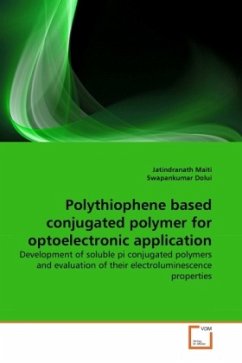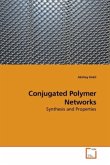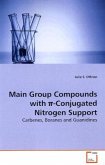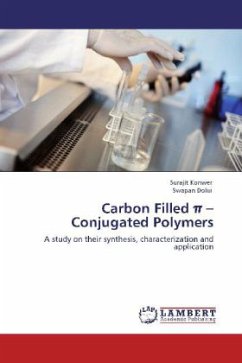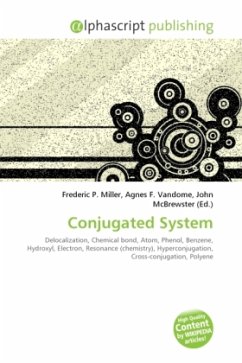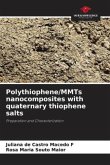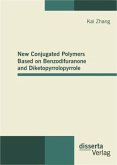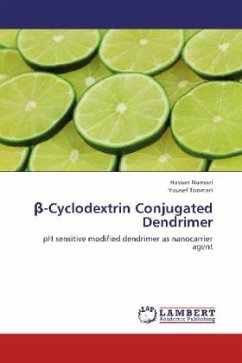On the road to commercially viable PLEDs to replace fluorescent and incandescent lighting, many hurdles have to be overcome. Still now, a major challenge posed by conjugated polymers is the fact of solubility and efficient fluorescent materials. We have developed the soluble polythiophene derivatives as well as high fluorescent materials to meet the requirement of PLED. A series of new ester substituted polythiophenes has been reported.The photoluminescence behaviours, quantum yield,the ox/reduction potential, band gap of the polymers have been studied. The polymers showed both fluorescence quenching in the presence of acids, copper, cadmium and lead metal ions and enhancement in the presence of aluminium, zinc metal ions, nucleotides and protein. The detection limit of HCl acid, copper, cadmium and lead ions has been evaluated by optical quenching method.The enhanced fluorescence efficiency of polymers is achieved at the cost of their solubility. We have shown that same polymer can be utilized in many applications like LED and chemical sensor.
Bitte wählen Sie Ihr Anliegen aus.
Rechnungen
Retourenschein anfordern
Bestellstatus
Storno

